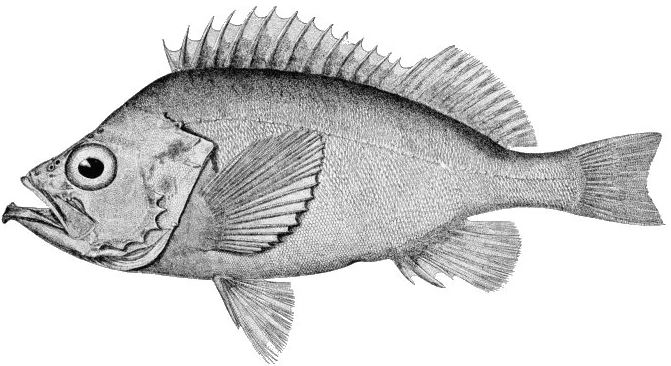Actinopterygii, also known as ray-finned fishes, represent the largest and most diverse group of vertebrates on Earth. With over 30,000 species, they inhabit a wide range of environments, from the deepest oceans to the shallowest freshwater streams. This article will explore the fascinating world of Actinopterygii, their unique characteristics, evolutionary history, and their importance to both ecosystems and human life.
What is Actinopterygii?
Actinopterygii, derived from the Greek words “aktis” (ray) and “pteryx” (fin), refers to a class of fishes characterized by their fin structure. Unlike lobe-finned fishes, which have fleshy, lobed fins, ray-finned fishes have fins that are supported by long, thin bony spines or “rays.” These rays are connected by a membrane, giving the fins a fan-like appearance.
Ray-finned fishes are incredibly diverse, with species ranging in size from the tiny Paedocypris, measuring just 8 millimeters, to the massive ocean sunfish, which can weigh over 2,000 kilograms. This diversity is not only reflected in their size but also in their habitats, behaviors, and adaptations.
Evolutionary History
The history of Actinopterygii dates back over 400 million years to the Devonian period, often referred to as the “Age of Fishes.” During this time, the first ray-finned fishes began to appear, evolving from ancient bony fish ancestors. Over millions of years, they diversified into the vast array of species we see today.
One of the key evolutionary advantages of Actinopterygii is their fin structure, which allows for greater maneuverability and speed in water. This adaptability has enabled them to colonize a wide range of aquatic environments, from coral reefs and freshwater rivers to deep-sea trenches.
Characteristics of Actinopterygii
Ray-finned fishes exhibit a variety of unique characteristics that distinguish them from other vertebrates. Some of the most notable features include:
- Fin Structure: As mentioned earlier, the fins of Actinopterygii are supported by bony rays, which provide flexibility and precision in movement. This allows them to navigate complex environments, such as coral reefs, with ease.
- Scales: Most ray-finned fishes have scales that cover their bodies. These scales can be cycloid, ctenoid, or ganoid, each providing different levels of protection and flexibility. The scales also help reduce friction as the fish swims through water.
- Swim Bladder: Many Actinopterygii possess a swim bladder, a gas-filled organ that allows them to control their buoyancy. By adjusting the amount of gas in the swim bladder, these fishes can easily move up and down in the water column without expending much energy.
- Diverse Diets: Actinopterygii exhibit a wide range of feeding strategies, from filter-feeding to predation. Some species, like the parrotfish, feed on algae, while others, like the barracuda, are fierce predators that hunt other fish.

Ecological Importance
Actinopterygii play a crucial role in aquatic ecosystems. As primary consumers, they form the base of the food web, feeding on plankton, algae, and detritus. This, in turn, supports higher trophic levels, including larger fish, birds, and marine mammals.
In coral reef ecosystems, for example, herbivorous ray-finned fishes help control algae growth, preventing it from overwhelming the coral. Predatory species help maintain balance by controlling the population of smaller fish and invertebrates.
Ray-finned fishes are also important indicators of environmental health. Changes in their populations can signal shifts in water quality, temperature, and the overall health of aquatic ecosystems.
Importance to Humans
Humans have relied on Actinopterygii for thousands of years as a vital source of food, culture, and economy. Fish such as salmon, tuna, and cod are staples in diets around the world and are central to the fishing industry, which provides livelihoods for millions of people.
Beyond their nutritional value, ray-finned fishes have also played important roles in culture and art. In many coastal communities, fishing practices are deeply intertwined with local traditions and beliefs. Fish are also prominent symbols in mythology and religion, representing fertility, abundance, and transformation.
In the scientific community, Actinopterygii are important model organisms for studying evolution, physiology, and environmental science. Their diversity and adaptability make them ideal subjects for understanding how species evolve in response to changing environments.
Conservation Challenges
Despite their abundance, many species of Actinopterygii are under threat due to human activities. Overfishing, habitat destruction, pollution, and climate change are significant challenges that affect ray-finned fishes globally.
Overfishing has led to the decline of many commercially important species, disrupting ecosystems and threatening food security. Habitat destruction, particularly in coral reefs and freshwater rivers, has reduced the available habitats for many species, pushing them closer to extinction.
Climate change is another major threat, as rising ocean temperatures and acidification alter the habitats and food sources of many ray-finned fishes. Conservation efforts, such as sustainable fishing practices, marine protected areas, and habitat restoration, are crucial to ensuring the survival of these species.
Actinopterygii, the ray-finned fishes, are a remarkable and diverse group of vertebrates that have adapted to virtually every aquatic environment on Earth. Their evolutionary success is a testament to their adaptability, and their importance to ecosystems and human life cannot be overstated.
As we continue to face environmental challenges, the conservation of Actinopterygii is more important than ever. By understanding their biology, ecology, and the threats they face, we can work towards preserving these incredible species for future generations.
Whether you’re a scientist studying their evolution, a fisherman relying on their abundance, or simply someone who appreciates the beauty of aquatic life, the world of Actinopterygii offers endless opportunities for discovery and appreciation.
